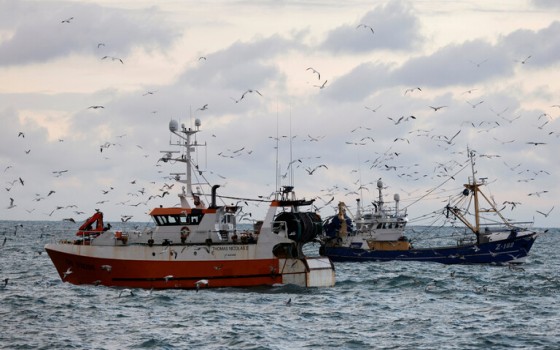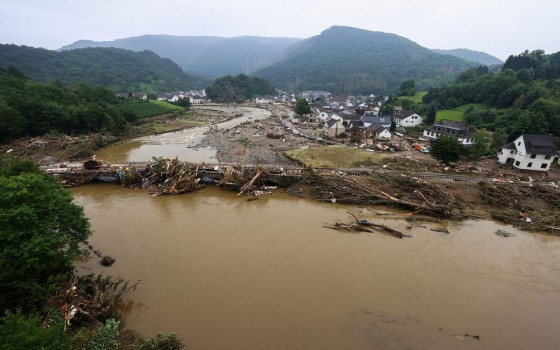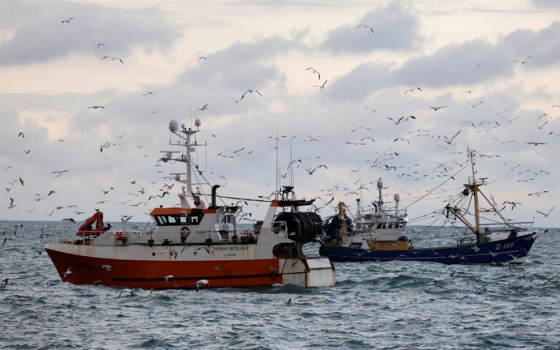
Rapid sea level rise..an urgent threat to people all over the world..causes and consequences

- Europe and Arabs
- Saturday , 31 August 2024 4:56 AM GMT
Capitals: Europe and the Arabs
Sea levels are rising faster and higher than ever before, creating what the United Nations has described as an “urgent and escalating threat” to people around the world.
On August 26, 2024, UN Secretary-General António Guterres of Tonga launched a global appeal for help warning that sea levels are rising at rates not seen in the past 3,000 years. On September 25, 2024, world leaders and experts are expected to meet at the United Nations to discuss how best to address this threat. According to a report in the United Nations Daily News Bulletin
Rate of Rise
The oceans are estimated to have risen by about 20-23 centimetres since 1880.
In 2023, the global average sea level reached the highest level ever confirmed by the World Meteorological Organization, according to satellite records kept since 1993.
Alarmingly, the rate of increase over the past ten years is more than double the rate of sea level rise in the first decade recorded by satellites between 1993 and 2002.
What causes sea level rise?
Sea level rise is caused by warming oceans and melting glaciers and ice sheets, phenomena that are direct consequences of climate change.
Even if global warming is limited to 1.5 degrees Celsius above pre-industrial levels, the target set by countries around the world as part of the 2015 Paris Agreement, the planet will see a significant increase in sea levels.
It is worth noting that ocean circulation patterns, such as the Gulf Stream, can lead to regional variations in sea level rise.
What are the consequences?
Sea level rise has wide-ranging impacts not only on the physical environment, but also on the economic, social and cultural fabric of vulnerable states around the world.
Saltwater flooding can damage coastal habitats, including coral reefs, fish stocks and agricultural land, as well as infrastructure, including housing, and can affect the ability of coastal communities to support their livelihoods.
Flooding can contaminate freshwater supplies, promote waterborne diseases that threaten people’s health and lead to stress and mental health problems.
At the same time, tourism revenues, a major economic driver, especially in many small island developing states, may suffer as beaches, resorts and other tourist attractions such as coral reefs are damaged.
A combination of several factors can force people to leave their homes, move to higher ground where available, or eventually migrate, disrupting economies, livelihoods and communities.
Perhaps unsurprisingly, UN Secretary-General António Guterres has described this phenomenon as a “threat multiplier.”
What is the relationship between rising sea levels and climate change?
Simply put, rising sea levels are a symptom of climate change.
As global temperatures rise due to climate change, the oceans absorb much of this excess heat, causing the warm water to expand in volume, a process known as thermal expansion, which contributes significantly to rising sea levels.
In addition, rising sea levels create a disastrous feedback loop.
For example, mangrove forests, which protect coastal habitats and store harmful carbon gases that contribute to climate change, could quickly become submerged and lose their protective properties. Fewer mangroves means more harmful gases in the environment, which leads to climate change. As temperatures rise, sea levels will rise even more.
Which countries are most affected?
An estimated 900 million people, or one in 10 people on Earth, live near the sea.
People living in coastal areas in densely populated countries such as Bangladesh, China, India, the Netherlands and Pakistan will be at risk, potentially suffering catastrophic flooding. Megacities on every continent are at risk, including Bangkok, Buenos Aires, Lagos, London, Mumbai, New York and Shanghai.
Small, low-lying islands face the greatest threats, with sea-level rise and other climate impacts already forcing people in Pacific nations such as Fiji, Vanuatu and the Solomon Islands to relocate.
What can be done to combat sea-level rise?
The most important action we can take is to slow global warming by reducing greenhouse gas emissions, which are the main driver of climate change.
At the same time, mitigating and adapting to the effects of sea-level rise has taken on new importance.
There are a wide range of solutions available, which of course come at a cost, including building infrastructure such as sea walls and storm surge barriers to protect against flooding and erosion, improving drainage systems and building flood-resistant buildings, restoring natural barriers such as mangroves, and protecting wetlands and coral reefs to absorb wave energy and reduce the impact of storms.
Many countries are also stepping up their disaster risk reduction plans and early warning systems supported by the United Nations to deal with incidents related to sea level rise.
In some cases, communities may also be relocated from vulnerable coastal areas as part of adaptation measures, an approach known as managed withdrawal.
Combating sea level rise requires a comprehensive, internationally coordinated approach. The United Nations is uniquely equipped to lead it.
The United Nations also supports Small Island Developing States and works with the international community to provide financial support, particularly through the Loss and Damage Fund, to the most vulnerable countries to help them adapt to the impacts of climate change.












No Comments Found